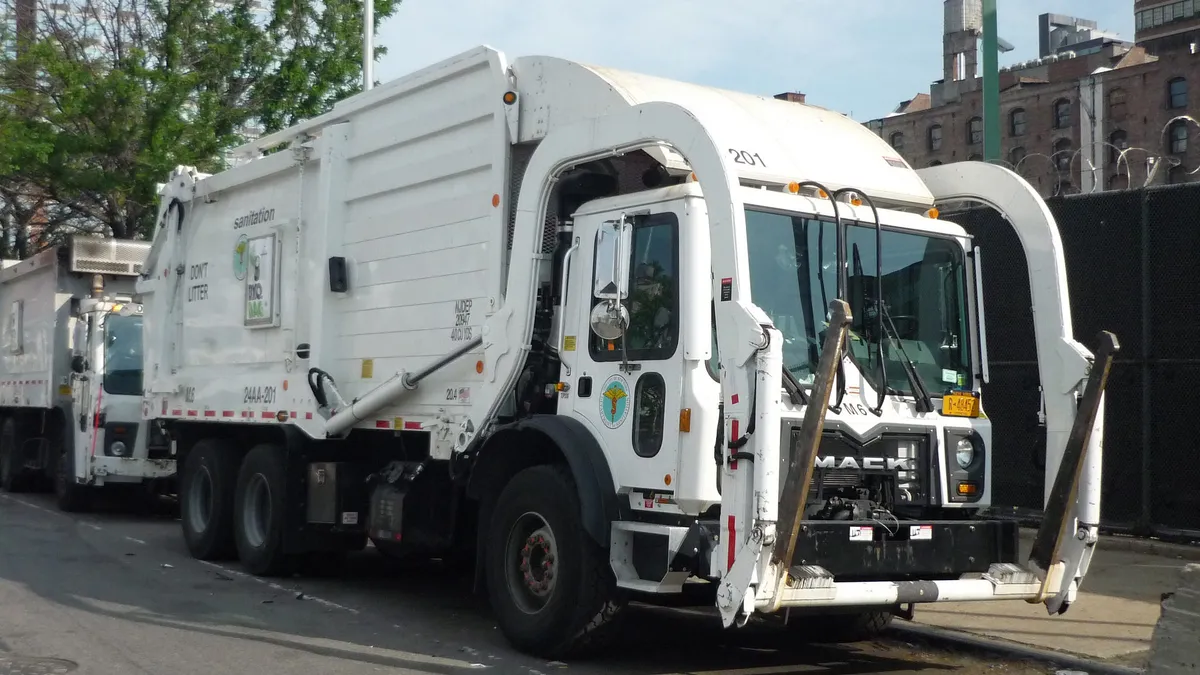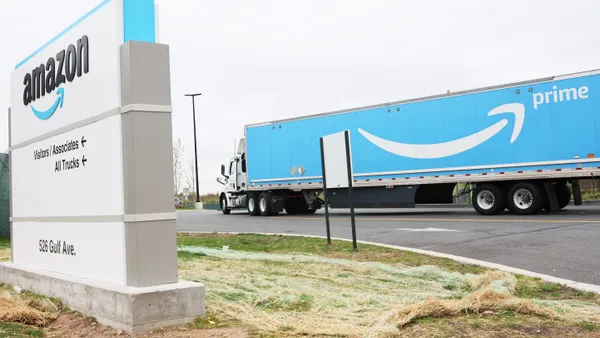Dive Brief:
- In order to reduce the number of traffic accidents, New York City will introduce municipal trucks with enhanced visibility and fewer blind spots, according to a press release from the New York City Department of Citywide Administrative Services (DCAS).
- The city will gradually roll out 2,500 fire engines, garbage trucks and dump trucks with lower cabs, more windows and smaller hoods beginning immediately. The new vehicles will replace the 10% of the city's fleet which is retired each year.
- Driver reaction time is 70% slower in traditional vehicles versus these "high vision" vehicles, according to a study by the City of London, cited in the same press release.
Dive Insight:
Transitioning to high vision vehicles is part of the city's "Vision Zero" initiative, which is intended to end traffic deaths and injuries and also includes other fleet upgrades like automatic lights, backup cameras, side guards and telematics to detect unsafe driving.
According to DCAS, collisions per mile in New York City are dropping. Moving violations like running red lights, and speeding are on the decline as well, even as the national average is climbing. Along with the changes to the city's vehicle fleet, Vision Zero entails expanded enforcement against such violations along with new street designs and configurations to improve safety.
At the annual Vision Zero Forum in New York this week, Keith Kerman, DCAS Deputy Commissioner and NYC Chief Fleet Officer, said the year the initiative began in 2014, there were eight fatalities in the first seven months. The four years since have seen just seven total, according to Waste 360.
"These technologies save lives and money and should be standard on all base fleet vehicles. DCAS calls on the fleet industry to separate safety options from luxury items in marketing vehicles," said Kerman in the release.
George Survant, senior director of fleet relations for the National Truck Equipment Association (NTEA), emphasized add-on technology that can make fleets safer exists, but keeping up with what is available is a challenge for fleet managers, according to Waste 360.
In addition to improving and monitoring its own fleet, New York City is also scrutinizing private sector vehicles, especially private sanitation trucks.













